It is the year 2030 at a busy coastal international airport. From the top of the terminal building, commuter drones taxi incoming passengers to the CBD of the nearby city.
A large, fully automated drone cargo freighter holds on the taxiway as an airline passenger jet, its pilot visible in the cockpit, takes off over the coast. The hangars ringing the airport are alive with the sound of smaller inspection drones swarming over aircraft fuselages and wings. Still in controlled airspace, beyond the sea cliffs, large maintenance drones monitor a phalanx of wind turbines silhouetted on the horizon, sending terabytes of real-time data on the status of the giant blades.
If the exponential rate of technological development of the past 10 years continues, this scenario may be closer than we think—possibly as little as a few decades away. To paraphrase Charles Dickens, for drone technology it is both the ‘best and worst of times’. There are so many opportunities for this technology to improve our lives, but capitalising on these opportunities requires a complex mix of stakeholders—industry, all departments of government, regulators, entrepreneurs etc.—working together cooperatively to meet the challenges, taking a flexible and agile approach. Flight Safety Australia asked experts from two unmanned systems organisations their views on what the next decade holds for drone technology, and the key enablers for managing this growth effectively and safely. Dr Reece Clothier is an aerospace engineer, and the president of the Australian Association for Unmanned Systems (AAUS); Tracy Lamb is a former Virgin Australia pilot, and now vice-president regulatory and safety affairs and chief pilot with the American-based Association for Unmanned Vehicle Systems International (AUVSI).
Clothier is passionate about the leadership position Australia holds in the world of drones: ‘the operations we are conducting today (such as Facebook and Airbus’s Zephyr high-altitude, long endurance drone [or HAPS—high-altitude, pseudo-satellite], Insitu Pacific’s commercial beyond-visual-line-of-sight flights, and Alphabet/Google’s Project Wing); few other countries in the world are doing’. Earlier this year, Uber Elevate announced Melbourne as its third city (and the only non-US one) for trials of its aerial ridesharing urban mobility electric VTOL aircraft, Uber Air. Unsurprisingly, given his aerospace engineering background, he says certification is a key enabler. As platforms become larger and more capable, and new forms of urban mobility—personal air vehicles, which are being approached as ‘drones carrying passengers’, enter the scene—certification needs to follow suit. We need a change of mindset, he says, to manage any potential risks to people and property arising from these new technologies, one that is flexible, responsive and ensures a high standard of safety. Any system for drone certification must be ‘tailored—a sliding scale, which can give technical assurance; assuring standards in the larger, more capable platforms’, as well as in personal air vehicles.
The opening scenario will only be possible in the future with sweeping changes to airspace management, another enabling area Clothier believes is critical for future drone technology. The current air traffic management system does not have the flexibility to cope with the likely number and mix of manned and unmanned aircraft, especially those operating over urban environments. To continue to enable such technology, and allow for the coming airspace integration of manned and unmanned aircraft, we must ‘accommodate, integrate and evolve’, always ‘keeping a little part of our mind on evolve. The new air traffic management system for unmanned systems will lay the foundation for the future of all airspace management. It may be 30 or 40 years down the track, but that’s where we’re headed,’ Clothier says.
In that future, ‘we need a suite of automated air traffic services available to both manned and unmanned users, able to manage the complexity of flight plans, altitudes and number of aircraft operating in the airspace. This automated airspace is needed in the near term, but Australia also needs to start maturing a longer-term view.’
The US has begun the journey to integration with its low altitude authorisation and notification capability (LAANC, pronounced ‘LANCE’) introduced by the Federal Aviation Administration (FAA) in 2018 to provide near real-time processing of airspace authorisation requests for drone operators nationwide. According to the FAA, under the ‘UAS data exchange umbrella, the agency will support multiple partnerships’. The first of these is LAANC where the FAA and industry share airspace data: approved industry service providers (USS) use FAA airspace data such as UAS facility maps, NOTAMs etc. to provide commercial drone operators, via the USS’s apps, with near-time authorisations to fly in controlled airspace near airports. In turn, ATC receives notification of drone operations at their location. Following beta trials in 2018, LAANC has now expanded to include over 400 air traffic facilities and 600 airports nationwide; and 14 industry service providers, including AirMap, Wing, Thales and more recently, DJI. To date, more than 50,000 automated authorisations have been issued.
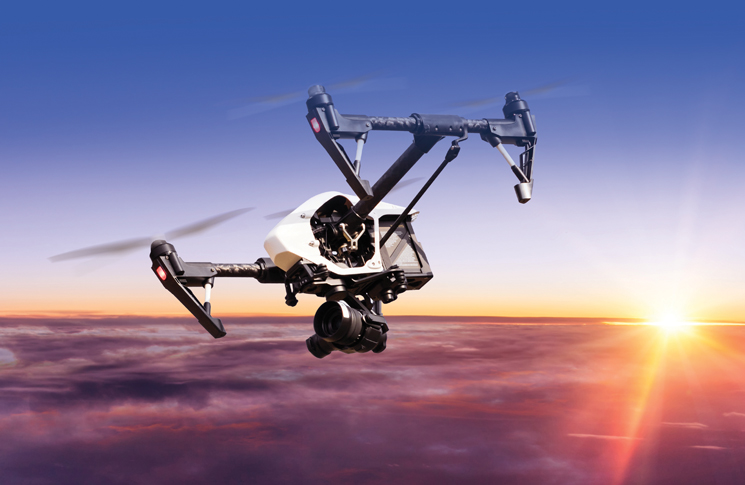
Australia is taking similar steps to the US, developing its own capability for automatic approvals to operate within three nautical miles of a controlled airport (where safe to do so), allow registered operators to submit flight authorisation requests and provide the building blocks for a future unmanned traffic management system. It is expected this will be delivered through CASA’s new Remotely Piloted Aircraft System platform in late 2019.
Clothier and Lamb agree that another enabler is flexible performance-based regulation: that is, regulation and standards that are platform-agnostic or non-technology specific, and performance-based. Lamb says such outcomes-based guidance gives the industry a framework within which to innovate, and develop new and existing technologies. While some may see regulation as a burden on industry, Lamb believes a clear framework of ‘good, solid, practical performance-based regulation provides guard rails for industry, frees up industry to innovate and protects safety’. Five years ago, the industry was a ‘bit like the Wild West—chaotic’, but since then many industry standards have been developed and regulations evolved, such as the FAA’s Part 107 in 2016, LAANC in 2018 and CASA’s Part 101 Manual of Standards in April 2019. These are a positive, she says, quoting a speaker at a recent unmanned conference, who said ‘standards are your survival kit’.
The AUVSI is promoting industry standards through its Trusted Operator Program (TOP), and recently released a Protocol Certification Manual to support the program. It is all part of standardising requirements for remote pilots and operators to ‘become recognised as safe, competent and reliable commercial UAS service providers’, certified under the Trusted Operators Program. A similar program was launched in Australia in 2017, with the Australian Association for Unmanned Systems’ Approved Drone Operator Program. AUVSI says ‘TOP complements current regulatory compliance by adding elements of safety culture, human performance, codes of conduct, airmanship, risk management and automation awareness’. These elements parallel manned aviation training and competency requirements. Lamb, with her experience flying Boeing 737s, highlights the importance of automation awareness for manned and unmanned pilots alike, citing the 2016 Australian ‘Little Ripper’ drone accident, where a Pulse Aerospace Vapor 55 disappeared off the Australian coast after a datalink loss (see the Australian Transport Safety Bureau report ‘Aviation Occurrence Investigation AO-2016-128 Final – 17 January 2017’). The remote pilot had programmed georeferenced points in the northern hemisphere, resulting in a home point about 1200 km from the start position.
A challenge both experts acknowledge is the multi-faceted unmanned environment with its many stakeholder interests. Clothier says a particular challenge for rule makers is the very public nature of drone operations, where aviation has become part of the community. In the past, manned aviation ‘took place behind steel mesh fences, in a vacuum, but the ongoing Wing (drone delivery systems) highlighted how the worlds are coming together’. It required CASA and the Australian Government to think differently and understand what they were trying to achieve to guide them through the regulatory process. It revealed issues of noise, privacy and security, as well as aviation safety, and the corresponding need therefore for the various government agencies and regulators to adopt a coordinated and cohesive, whole-of-government approach. However, he is hopeful that Australia’s history of forward thinking, and a willingness on the part of agencies to work together, will result in a consistent policy approach to drones across the agencies.
Another challenge for regulators is what Lamb describes as the ‘double-edged sword of performance-based regulatory development’—where national aviation authorities such as the FAA endeavour to practise data-driven rulemaking, but are hampered, Lamb says, when that critical data is often proprietary knowledge which industry is reluctant to divulge because it may weaken their competitive edge. The UAST (Unmanned Aircraft Safety Team) data exchange project, a collaboration between the FAA and industry, recognises this challenge, and LAANC, the first example of such collaboration, has begun to break down some of these barriers. However, there are still data gaps. As an example, while there are accurate figures on the number of registered drones in the US, analysts say this does not reflect the actual number in the drone fleet. In 2018, registered drones totalled around one million, comprising 878,000 hobbyists and over 120,000 drones used for commercial and other purposes, by government agencies and research organisations. However, according to estimates, this underrepresents the true number which may be up to four or five times this figure.
The exponential growth in drone numbers, particularly in Australia and the US, has come in the hobbyist or recreational sector, as these registration figures attest. World leader Chinese manufacturer, DJI, accounts for over 74 per cent of the global market, driven by uptake of its consumer and prosumer drones such as the Mavic (Pro and Air) and the Phantom (3 and 4) (Skylogic Research 2018). However, according to Clothier, that balance between hobbyist and commercial drones reflected in these figures may be changing. ‘Large companies like DJI and Parrot have been instrumental in creating a strong private recreational market, and have contributed greatly to public understanding about STEM (science, technology, engineering and maths) and drones more generally. While there will always be a fascination with things that fly, we’re beginning to move through the hype, and there will be slower growth in the recreational market.’
With an increasing focus too on automation, some of the ‘hands-on, stick-flying’ attraction of recreational drone flying will be lost, Clothier says. The latest FAA Aerospace Forecast 2018–38 supports this, saying that while the ‘small hobbyist UAS fleet is forecast to double from 1.1 million in 2017 to 2.4 million by 2022,’ the commercial, non-model fleet is forecast to grow from 110,604 in 2017 to 835,000 in 2022.’ The forecast projects a gradual saturation over the next five years in the hobbyist UAS fleet, a ‘saturation which parallels other consumer products (such as video game consoles and mobile phones)’.

CASA moves on drones
A lot has been happening with drones at CASA recently, with even more to come.
- We replaced the ‘Can I fly there?’ app with a new digital platform. App developers will be able to apply to connect to the platform and, after passing an approval and onboarding process, develop their own apps for drone flyers.
- The first CASA-approved app was connected to the new digital platform.
- A virtual assistant was progressively launched by CASA on casa.gov.au and droneflyer.gov.au to help drone flyers with all of their drone questions. The assistant appears at the bottom right hand corner of relevant pages of the sites.
- In late July, legislation was passed to introduce a mandatory drone registration and accreditation scheme.
More information:
Registration and accreditation: casa.gov.au/drones
CASA-approved drone apps: casa.gov.au/droneapp

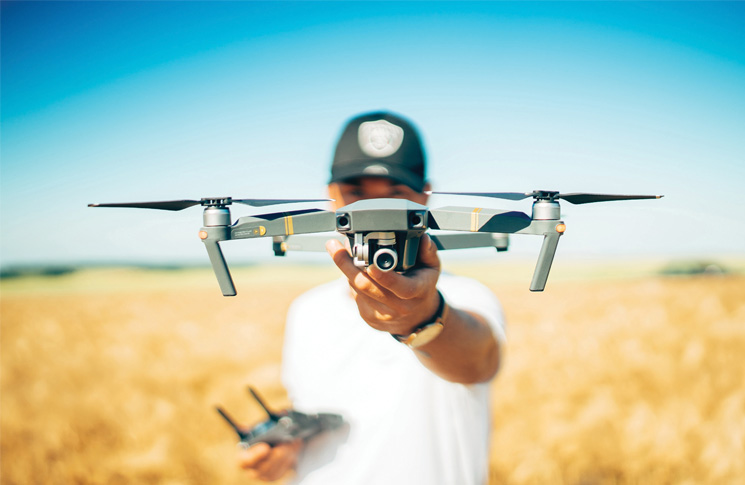
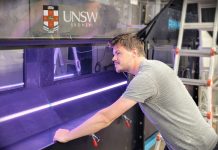
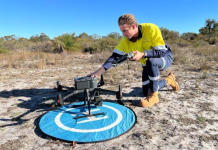
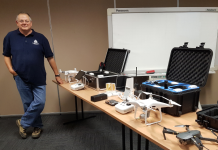

Pie in the sky stuff!
Not gunna happen in our lifetime!
On the contrary .. if not for politics and ego’s, this technology requires only minor refinement to the technology that was used to separate ships in port over 20years ago. It had been re-vamped for aviation use 23yrs ago based on VHF datalink between aircraft and then the ground, HF datalink potentially ie. where required, and GPS. About 6-8yrs ago, the vision event on Sydney harbour exampled the sort of development possible when about 40 drones danced together in very tight formation for advertising purposes over the Opera house.
ATC for enroute phases of flight is currently unnecessary expensive and inefficient; it does not need to be that way.
Well said.
I design and build drones with automatic avoidance, triple redundant systems and full live system diagnostics, all prerequisites for any commercial aircraft.
The technology is NOW, as you described, and is being demonstrated not only to public audiences but also to the bureaucrats holding up the inevitable BVLOS legislation.
Walter – just remember, when you have your head in the sand all people see is your ar………..
Well stop looking then! -:) But dream on!
🤣 I agree, lets keep it light hearted.
I found the article quite interesting from a futuristic point of view but I don’t think the general travelling public will all that keen on jumping into automated taxi drones anytime soon! I have friends that still don’t like to fly in piloted aircraft to this day let alone getting into a pilotless drone of any kind! In fact, I know some friends and family members, that refuse point blank to travel on a fixed wing aircraft, with highly trained and experienced crew up the front!
I think 2030 is a bit ambitious. Considering the majority of freighter aircraft are repurposed passenger aircraft, and the number of new build freighter aircraft is minute, the cost of producing a fully autonomous freighter aircraft will be prohibitive. Add to this the reality of the total crewing costs of a 747 freighter aircraft is less than one percent of all operating costs, I feel the time line will be considerably greater than 2030.
Why is everyone ignoring the ‘invisible till you hit them’ recreational and sport pilots who fly at low level without any electronic identification.
I build drones that have automatic aircraft avoidance but while the RaS pilots still live in the last century and can flit around the sky without any identification all this dream stuff (as Walter points out) CANNOT happen.